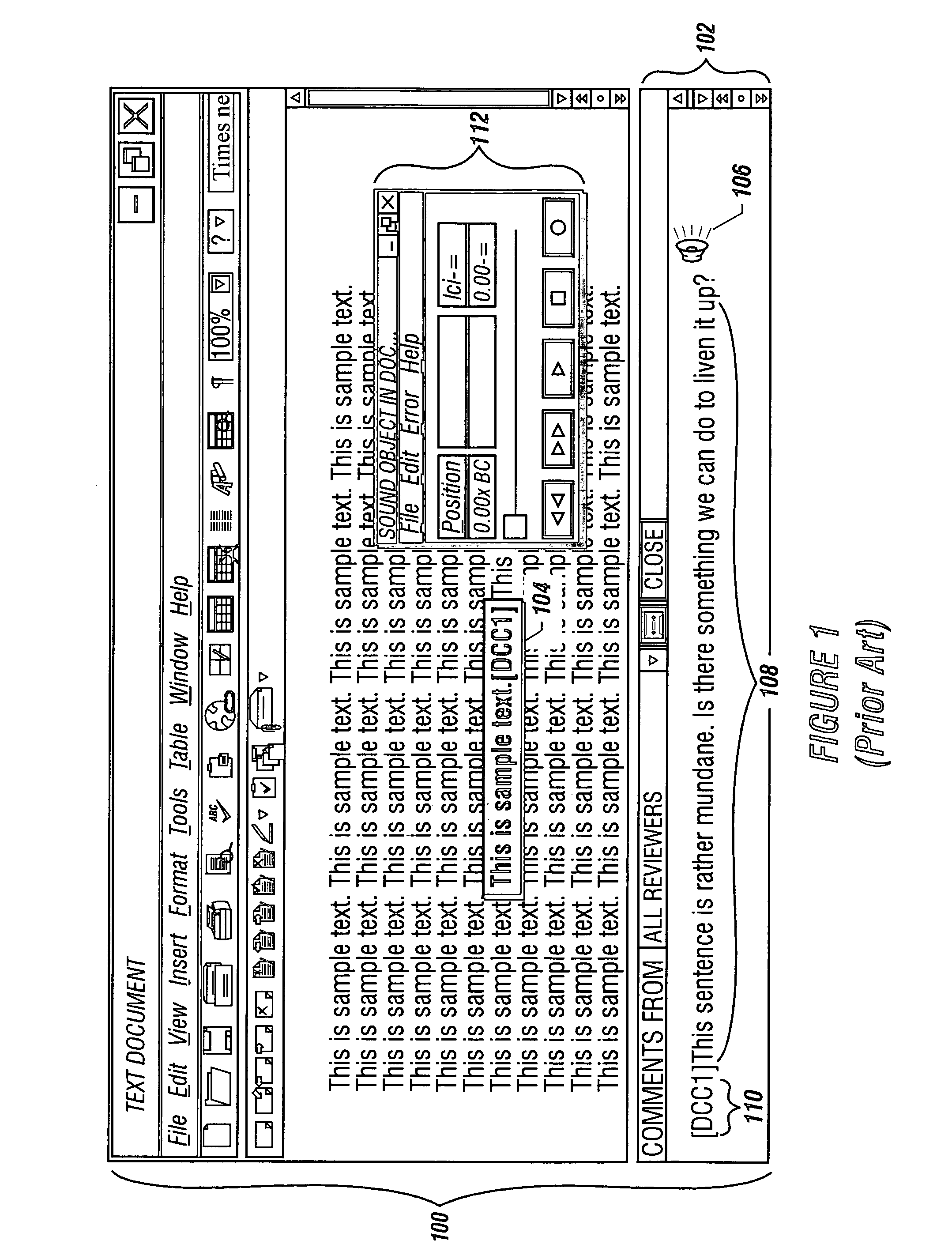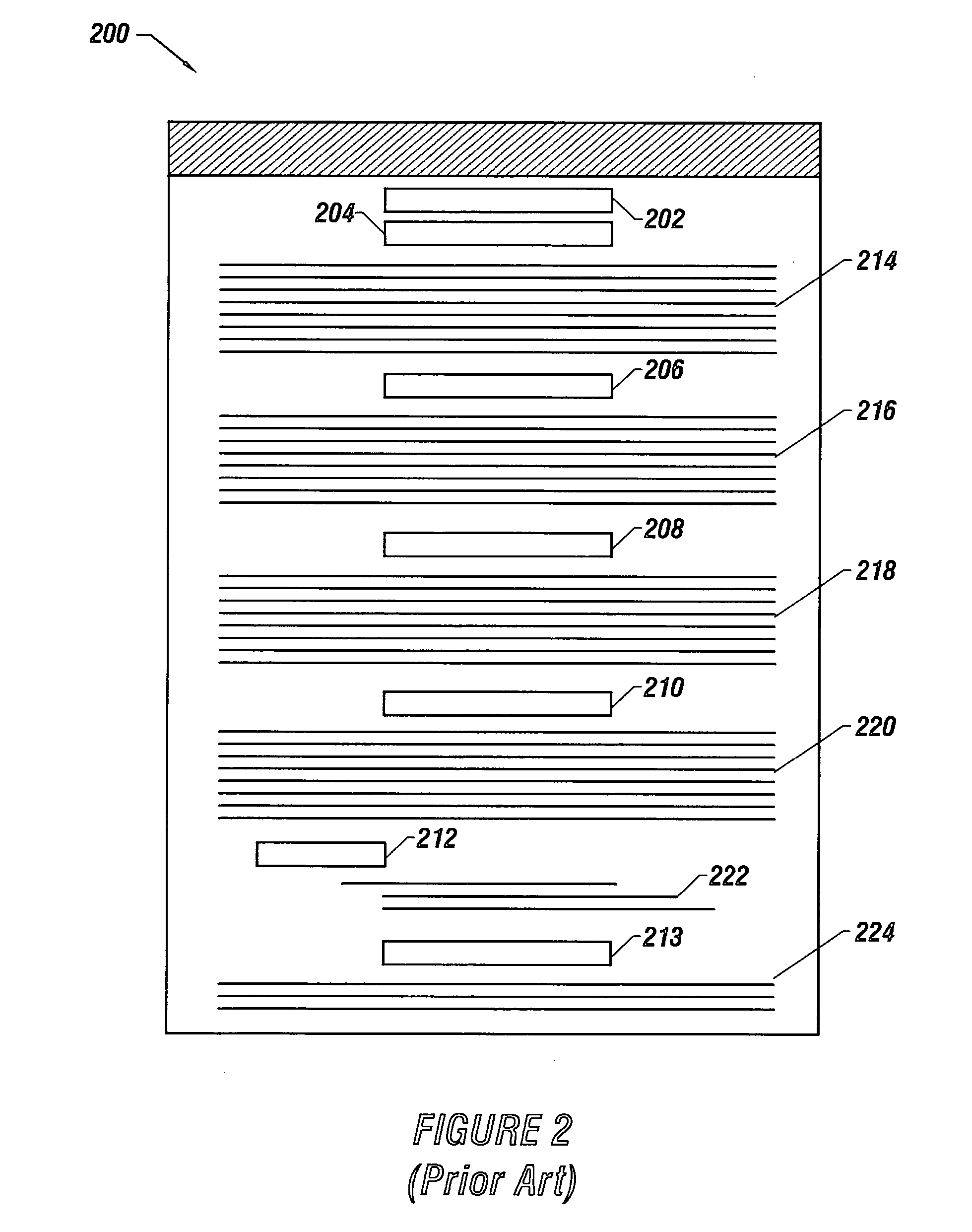Method and apparatus for annotating a line-based document
a line-based document and annotation technology, applied in the field of computer technology, can solve the problems of not providing the reviewer with an intuitive way to the first draft of a document often contains mistakes or other problems, and the current system does not allow the reviewer to access and verbally interact with the document from multiple locations, so as to achieve the effect of improving the way of interaction
- Summary
- Abstract
- Description
- Claims
- Application Information
AI Technical Summary
Benefits of technology
Problems solved by technology
Method used
Image
Examples
Embodiment Construction
[0058] A method and apparatus for annotating line-based documents is described. In the following description numerous specific details are set forth in order to provide a more thorough understanding of the present invention. It will be apparent, however, to one skilled in the art, that the present invention may be practiced without these specific details. In other instances, well-known features have not been described in detail so as not to obscure the invention.
[0059] It is important to note that any type of individual who has a need to review documents may utilize one or more aspects of the invention. Movie producers, directors, actors, and other entertainment industry people as well as doctors, lawyers, teachers, students, businessmen, and many other types of individuals encounter the problems solved by embodiments of the invention. Thus, it should be clear to one of ordinary skill in the art that there are multiple contexts within which to utilize the method and apparatus for a...
PUM
 Login to View More
Login to View More Abstract
Description
Claims
Application Information
 Login to View More
Login to View More - R&D
- Intellectual Property
- Life Sciences
- Materials
- Tech Scout
- Unparalleled Data Quality
- Higher Quality Content
- 60% Fewer Hallucinations
Browse by: Latest US Patents, China's latest patents, Technical Efficacy Thesaurus, Application Domain, Technology Topic, Popular Technical Reports.
© 2025 PatSnap. All rights reserved.Legal|Privacy policy|Modern Slavery Act Transparency Statement|Sitemap|About US| Contact US: help@patsnap.com



